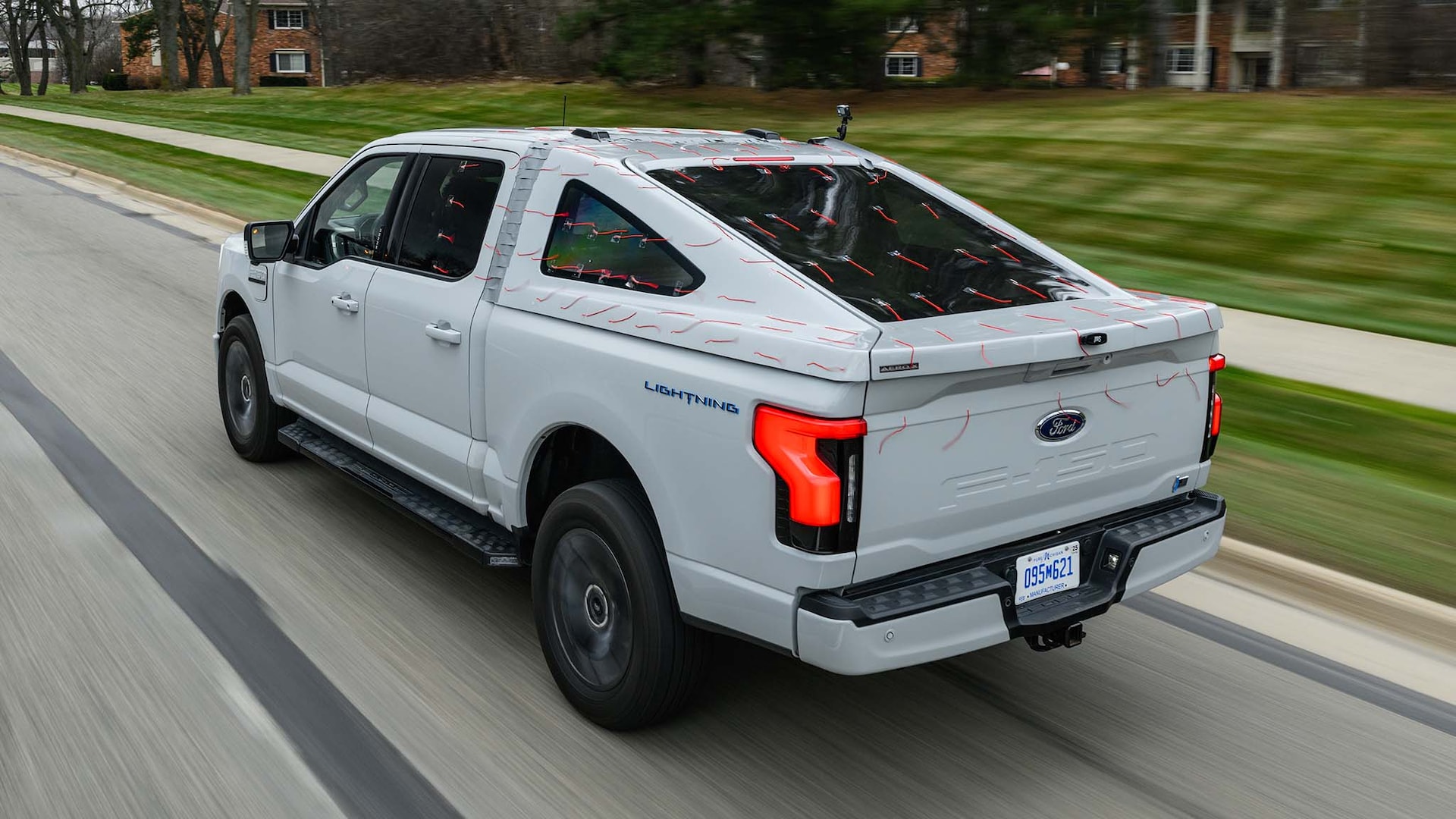Our long-term Ford F-150 Lightning test truck has left us with a singular gripe: its mediocre driving range. The limited range, coupled with the current challenges posed by America’s public charging network, stands as a primary obstacle to widespread electric vehicle (EV) adoption. Recognizing this, the CES 2024 show floor showcased an array of technologies aimed at enhancing EV range. In this context, we explore these promising range-extending technologies that could potentially address the limitations of our Lightning pickup.
HERE Technologies, a mapping database provider, has announced an innovative approach to navigation routing. The incorporation of data such as road topography, roughness, local temperature, and wind speed into routing algorithms is expected to enhance efficiency. Rival Mapbox has introduced a similar system, utilizing onboard data like battery health and HVAC use. HERE’s ability to receive telematic data from vehicles allows it to identify issues such as EVs leaving charging stations without charging, leading to the prompt identification of faulty stations.

Valeo’s Predict4Range software offers a potential solution to range anxiety in today’s software-defined EVs. An over-the-air update could integrate this software, predicting and executing efficient thermal management strategies based on real-time factors like temperature, wind speed, charging station maps, road elevation, and vehicle parameters. The claimed 24% extension in driving range, particularly in extreme conditions, includes strategies such as charging right before departure on cold mornings to pre-warm the battery and cabin.
Schaeffler’s Mechatronic Ride Height Adjuster presents a simple yet effective solution for lowering a full-size truck like the Lightning at highway speeds. While not suitable for off-roading due to its limited 1.6-inch adjustment, it significantly reduces aerodynamic drag. The system, driven by a motor, operates similarly to a trailer’s tongue jack, offering a cost-effective and easily installable alternative to traditional height adjustment systems.
Schaeffler introduces the Trifinity Triple Roller Ball Bearing as a mechanical solution for larger trucks. Departing from the trend of using lower-friction ball bearings, this heavier-duty three-row ball-bearing setup aims to reduce friction significantly, potentially yielding a range improvement of 2-5%. The design simplifies assembly using face splines, providing a practical solution to enhance efficiency in full-size pickups.
The imminent legalization of camera-based side mirrors in the U.S. has prompted manufacturers to explore various approaches, particularly tailored for trucks. AirShaper’s study suggests a potential 5.5% range improvement with camera mirrors. Manufacturers like Forvia and Stoneridge showcased concepts like the Forvia eMirror, which stitches images from side and rear cameras to provide an invisible car view, and the Stoneridge MirrorEye, aimed at heavy-duty trucks with a high-mounted mirror wing for improved visibility and potential fuel-efficiency gains.
In conclusion, the CES 2024 exhibition highlighted promising technologies that could significantly enhance the range of EVs, addressing one of the primary concerns hindering widespread adoption. These innovations, from smarter navigation routing to advanced thermal management strategies and mechanical solutions, offer a glimpse into the future possibilities for our long-term Ford F-150 Lightning.

